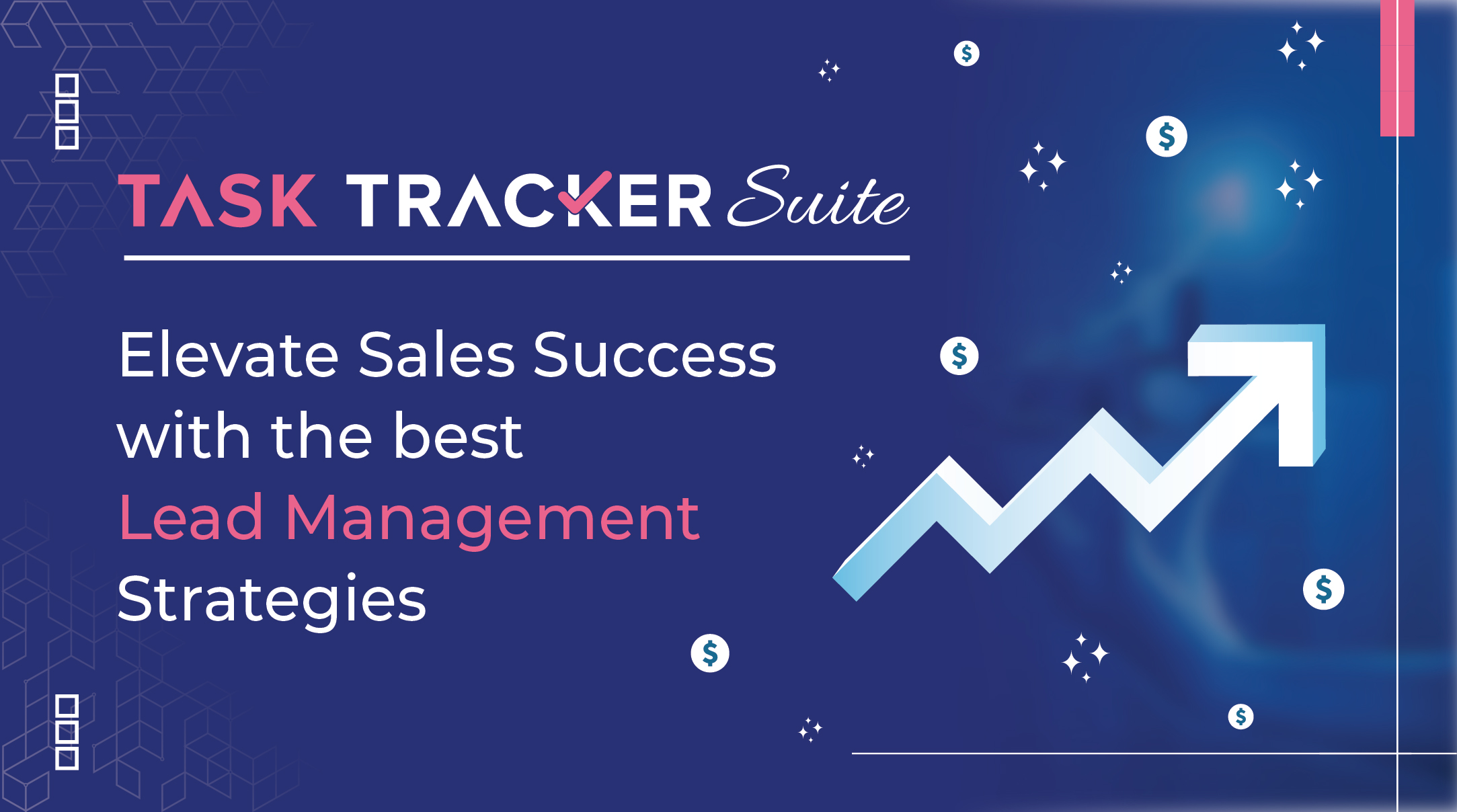
Lead management is crucial, especially for businesses with limited resources and time to generate leads. However, effective lead management can be challenging and complex if you don’t have a clear strategy and the right tools in place. That’s why you need a sales activity tracking tool to streamline your lead management process.
A sales activity tracking tool or a sales tracker is a software application that helps you monitor and measure your sales activities, such as client data, sales funnel, leads’ status in sales pipelines and sales team’s performance.
In this blog post, we will discuss the importance of lead management for small businesses and startups and share some essential strategies you can implement to boost sales.
Benefits of effective lead management
- Increased sales: Prioritising qualified and sales-ready leads makes deal closure faster and easier. It also improves customer lifetime value, boosts customer loyalty, and spreads brand advocacy.
- Improved customer relationships: Effective lead management can help you improve customer relationships by providing personalised and relevant solutions. Understanding customers’ needs, preferences, and pain points helps you match customers’ expectations and goals. That’s how you build trust and rapport with your customers and enhance brand reputation and credibility.
- Enhanced competitive advantage: Measuring sales analytics and optimising leads management processes gives you a competitive edge. Also, your sales team can quickly identify and target ideal customers, segment and prioritise leads, track sales activities, and improve sales performance.
Effective lead management Strategies for Small Businesses and Startups
You can implement these strategies to manage leads effectively, overcome sales challenges, and achieve revenue goals.
Client Data Management
Client data is the foundation of effective lead management, as it helps you understand your leads and customers better to provide them with personalised and relevant solutions.
Always collect accurate and up-to-date client information, whether you’re capturing leads from your website, social media, email, phone, or events. After capturing leads, organise and store your customer data in a reliable and secure database system that provides data privacy and security.
Lead Qualification
Identify and evaluate your leads’ quality and determine whether they are worth pursuing. Lead qualification helps you prioritise leads based on their potential to become customers. It helps you allocate resources and time better. You can use a lead scoring model to assign numerical values to your leads based on various demographic and behavioural criteria, such as their age, gender, location, industry, company size and revenue.
You can also classify your leads as hot, warm, and cold based on their readiness to buy.
Sales Pipeline Management
A sales pipeline shows the progress of leads in the buyer’s journey. It identifies the opportunities and challenges in your sales cycle. Create and maintain a structured sales pipeline reflecting your sales process and buyer journey. Define the actions and criteria required to move your leads from one stage to the next.
Also, review your sales pipeline regularly to analyse the key indicators, such as the number of prospects, conversion rate, average deal size and sales cycle length. Compare actual results with sales goals and adjust strategies and actions accordingly.
Sales Process Improvement
Sales process improvement helps you eliminate the waste and friction in your sales process and enhance the quality and consistency of your sales performance. Identify the areas for improvement in your sales process by conducting a SWOT analysis, which stands for strengths, weaknesses, opportunities, and threats. Evaluate your sales process from the perspective of your customers, competitors, and internal factors and identify the gaps and issues that must be addressed.
Implement the best practices and tools for your sales process, such as sales scripts, sales activity tracking tools, and sales analytics. Monitor and measure the impact of your sales process improvement on your KPIs.
Keep improving your sales process by following the Plan-Do-Check-Act (PDCA) cycle.
The PDCA cycle has the following steps:
- Plan: Plan the improvement by identifying the problem, setting goals, and designing the solution.
- Do: Try the solution to eliminate the problem.
- Check: Analyse the data and evaluate the outcomes.
- Act: Standardise the solution, document the process, and communicate the results.
Sales Team Performance
A well-performing sales team is the key to effective lead management, as it affects the quality and quantity of your sales activities. To improve performance, set clear and realistic expectations with your team, provide timely feedback, and resolve any conflicts and issues.
Motivate your sales team positively by creating a positive and supportive work environment. Recognise and appreciate each team member’s efforts and achievements. For better performance and results, it is also important to reward your sales team fairly by implementing a transparent compensation plan.
Close Deals Faster
To close faster, research about your client, approach decision-makers and tailor your communication and service to their needs. Create a sense of urgency and scarcity in your prospects to persuade them to buy faster. You can use trial closes and assumptive closes to test your leads’ readiness and willingness to buy and move them closer to the final purchase.
Ask for the sale and overcome the last objections that may prevent your prospect from purchasing. Follow up and confirm the deal with them and ensure they are satisfied with their purchase to avoid the chances of cancellation.
Use Sales Tracker To Streamline Lead Management Processes
Sales Tracker is a powerful and easy-to-use sales activity tracking tool that helps you streamline the lead management process and boost sales. Here are some key features and benefits of Sales Tracker:
- Simple and intuitive user interface: You can easily access and use its features and customise your sales process as per your business needs.
- Real-time and accurate sales tracking: You can see the status and progress of your prospects and the results of your sales activities.
- Data-driven and actionable sales analytics: You can analyse the data and statistics of your team’s performance and gain insights into their activities.
- Guided Next Step: Your team members can track the history of each lead in the sales pipeline and see the next step to move the lead closer to sale.
- Tasks and Follow-up Reminders: Your team gets reminders via email and WhatsApp for their tasks and follow-ups. This helps them to stay organised and productive and never miss an opportunity.
- Dashboard and Reporting: Sales Tracker provides a comprehensive overview of all your sales activities in an interactive dashboard to measure sales results and make data-driven decisions.
Final Thoughts
Effective lead management is essential for small businesses and startups to increase sales, improve customer relationships, and enhance competitive advantage. Sales Tracker is one of the best sales activity tracking tools to help you streamline lead management processes, boost sales success, and have a thriving business.
Sign up here to try Sales Tracker for free, or book a demo with one of our specialists to understand how the tool can help you meet your revenue goals.


Leave a Reply